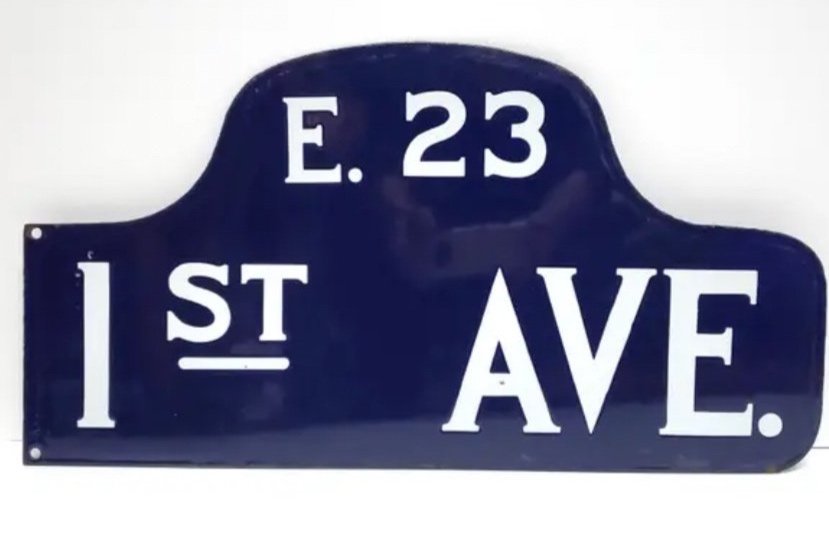A Neighborhood with No Name
Ellen Karsh
Word Count 713
I am a New Yorker who lives in a neighborhood that has no name.
For decades I have rented an apartment that I love on East 23rd Street in Manhattan between Ist and 2nd avenue. When my fellow New Yorkers ask me where I live, I generally say, "East 23rd Street." But, lately, merely providing a street is not enough. Adding cross streets is not enough. Avenues? Not enough either. Everyone seems preoccupied with neighborhoods. "Oh, so you must live in Gramercy Park," they say (with great respect and at least a little awe), "Or—wait a second—isn't that the Flatiron district?"
While they may not admit it, I'm pretty sure New Yorkers are grappling for a clue about the ritzy-ness of my building, the relative status of the apartment's location, my place on the real estate totem pole in the city, and, ultimately, how much money I have in the bank. The funny thing is that I don't want to elevate my position—I'd feel like a total fraud. I would much rather people that I meet know the truth. And the truth is that my only connection to picturesque Gramercy Park, which, by the way, you need a special key to enter—a key that is only bestowed on the lucky few who actually live in one of the brownstones or apartment houses ringing the park—is when I walk around it on the way to my bank on Park Avenue South and various stores and restaurants to the south and west.
No, I don't call Gramercy Park home, nor would Gramercy Park really want me to.
And, I don’t live in Flatiron either—not really. The Flatiron building (a triangular landmark built in1902 and named for its resemblance to a cast-iron clothes iron)—and, thus, the Flatiron neighborhood--is five long avenue blocks, and, really, another world away from my apartment.
Nor do I live in Murray Hill, slightly to the north and slightly to the west (thank goodness). I wouldn't feel comfortable saying I live in Murray Hill because it is supposedly, or so real estate articles have warned, mainly populated by 24-year-olds who party late into the night and have turned their post-war 30-story high-rises into post-collegiate dorms.
I'm too old and not nearly enough fun for Murray Hill.
I also don't live on the Lower East Side—23rd Street is too far uptown and doesn’t have the right amount of grunginess for that designation. The same goes for the East Village. There are other Manhattan neighborhoods that I’ve heard of and know I don't live in—though I'm not sure where they are—Turtle Bay (where Katherine Hepburn lived) and Carnegie Hill, for instance.
New neighborhoods crop up in Manhattan all the time. I actually remember—I'm pretty sure—a time before there was such a thing as TriBeCa. Not so long ago, a few hotels and hot restaurants sprung up on Madison Avenue in the 20s and brought that neighborhood a lot of buzz and a new name, NoMad (short for north of Madison Square Park). Madison Square Park itself, formerly a haven for drug dealers, is now not only home to a Shake Shack and a constant stream of weird art installations but has Rupert Murdoch overlooking it from his $57 Million four-story penthouse
But just plain East 23rd Street—and I mean really east—practically at First Avenue—with its supermarket, McDonald’s, two nail salons, one beauty parlor, a few apartment buildings, an urgent care, a picture framing shop, a parking garage, a dry cleaner, and two drugstores—is not part of any neighborhood at all. (My no-name part of town was once referred to as a 'restaurant wasteland' in a snarky review of a pub near my apartment and that is just about the most insulting and hateful thing you can say about a neighborhood in food-obsessed New York.)
Maybe East 23rd Street should be called No-Na (No-Name) or East Wasteland, although I'd prefer something with a little more pizazz like, say, East River Shores. But that wouldn't be quite accurate since the East River is a long, blustery, chilly block-and-a-half away from my front door.
Ellen is the co-author of five editions of The Only Grant-Writing Book You'll Ever Need (Basic Books; 2019 is the most recent). She’s written numerous grant-related articles for nonprofit and philanthropy magazines and newsletters. Her personal essays have been published in Newsday, and Newsweek.
